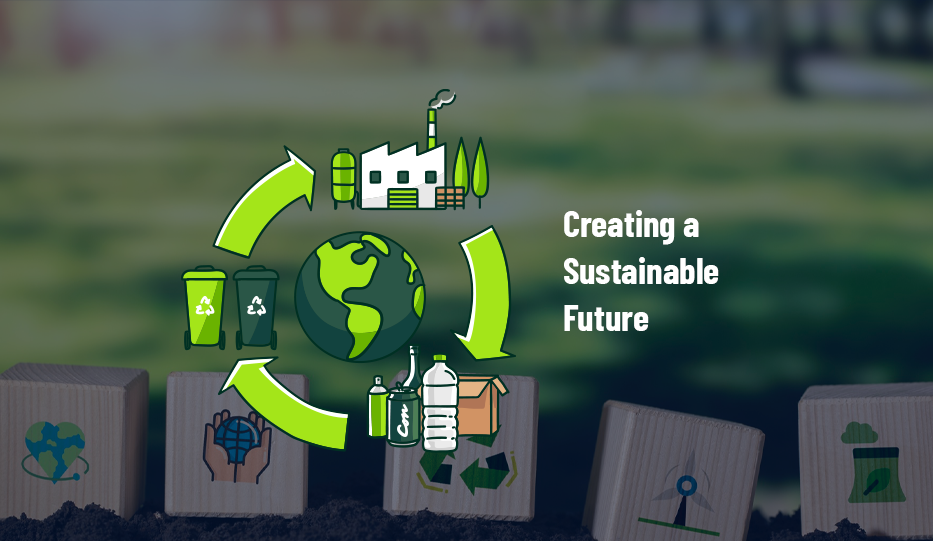Creating a Sustainable Future
Waste Recycling is the process of converting waste into new products. This method can be used for dry waste such as paper, plastic, metal, and glass. The technical guidelines for recycling include setting up collection points for recyclable materials, transporting them to the recycling facility, and ensuring that the recycled products meet the required quality standards.
India’s dry waste recycling market has been growing steadily over the years, driven by a combination of government initiatives, increasing public awareness, and the emergence of new technologies and business models. According to a report by the Central Pollution Control Board, India generates around 62 million tonnes of solid waste annually, out of which about 45 million tonnes is dry waste. However, only a small fraction of this waste is currently recycled, with the rest either ending up in landfills or being dumped in open spaces.
One of the key challenges facing the dry waste recycling market in India is the lack of proper waste management infrastructure and facilities. While there are some large-scale recycling plants in the country, a significant portion of the recycling is still done by small and informal players, who often lack the necessary technology, equipment, and regulatory compliance.
Factors that have helped scale dry waste recycling
Despite these challenges, the dry waste recycling market in India has significant scalability potential, driven by several factors.
- Growing awareness and concern for the environment and sustainability among the general public, which is leading to increased demand for recycled products.
- Government initiatives and policies aimed at promoting recycling and reducing waste generation, such as the Swachh Bharat Abhiyan and the Plastic Waste Management Rules.
- The emergence of new technologies and business models, such as waste-to-energy and waste-to-compost, which are making recycling more efficient and cost-effective.
- The increasing involvement of corporate entities and investors in the sector, which is leading to the development of large-scale recycling infrastructure and the adoption of best practices.
Overall, the dry waste recycling market in India is poised for significant growth in the coming years, driven by the country’s large and growing waste generation, increasing public awareness, and government support. However, this growth will require significant investment in infrastructure and technology, as well as the development of strong regulatory frameworks to ensure compliance and quality control.
What is upcycling?
Upcycling is the process of transforming waste materials or products that are no longer useful into new materials or products of better quality and value. In India, the upcycling market for dry waste has been gaining traction in recent years, with several organizations and individuals contributing to this growing industry.

Here are some facts and figures related to the upcycling market for dry waste in India:
- The waste generated in India is estimated to be around 62 million tonnes per year, of which only about 43 million tonnes is collected, and only 11.9 million tonnes is treated or processed (source: Central Pollution Control Board).
- The waste generated in urban areas in India is expected to increase from 68.8 million tonnes in 2018 to 165 million tonnes by 2030 (source: McKinsey & Company).
- The upcycling market for dry waste in India is estimated to be worth Rs. 5,000 crore (approx. USD 684 million) (source: The Better India).
- India’s government has launched several initiatives to promote waste management and upcycling. For example, the Swachh Bharat Abhiyan (Clean India Mission) aims to make India clean and open defecation-free by 2019, and the National Green Tribunal has directed all state governments to set up at least one waste-to-energy plant in their respective states.
- The upcycling market for dry waste is expected to grow in India due to the increasing awareness about waste management and sustainability, as well as the government’s push towards a circular economy.
India is home to various upcycling waste product industries and here are some examples of companies working in India:
- Paper recycling industry: The paper recycling industry in India is growing rapidly, with a number of companies specializing in upcycling waste paper into new paper products. Some of the major players in this industry include ITC, Hindustan Paper Corporation, and Century Pulp and Paper.
- Plastic recycling industry: India is one of the largest producers of plastic waste in the world, and the plastic recycling industry is playing a key role in upcycling this waste. Companies such as Reliance Industries, GAIL, and IOCL are actively involved in the production of recycled plastic products.
- E-waste recycling industry: With the growing use of electronic devices in India, the e-waste recycling industry is becoming increasingly important. Companies such as Attero, Ecoreco, and Virogreen are involved in the upcycling of electronic waste into new products.
- Textile recycling industry: The textile industry is a major contributor to waste in India, and the textile recycling industry is working to upcycle this waste. Companies such as Ecoexist, Handspun Hope, and Rimagined are involved in the production of upcycled textile products.
- Metal recycling industry: The metal recycling industry in India is also growing, with companies such as Metallo Mondo and Metal Scrap Trading Corporation involved in the upcycling of metal waste into new products.
Overall, upcycling waste product industries and companies in India are making a significant contribution towards reducing waste and creating a more sustainable future through circularity.
